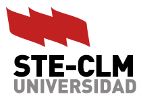| Siguiendo con el UCLM – International Science Webinar Series contaremos esta semana con Dr. Stuart Cantrill, del Instituto Imdea Energía de Mad Chief Editor de Nature Chemistry, con la conferencia titulada: «The Nature of Chemistry Publishing»
La ponencia tendrá lugar el día 24 de junio a las 12:00h y con una duración de aproximadamente 50 minutos. Les seguirán un primer turno de preguntas por parte de estudiantes y un segundo por parte del resto del personal de la UCLM. Este es el link de registro
Talk abstract:
This talk will take a behind-the-scenes look at Nature Chemistry’s editorial processes, as well as providing some guidance on how to write a paper, how to write an abstract and some DOs and DON’Ts when it comes to titles and graphical abstracts – there will also be some advice on how best to appeal an editorial decision. In addition, there will be a broader consideration of peer review in general, the wider chemistry publishing landscape and also other aspects related to scientific publishing including metrics (impact factor, altmetrics, and so on) and the use of social media.
Biography
A graduate of the University of Birmingham in the UK, Stu obtained his PhD in chemistry from UCLA in 2001 (working with Fraser Stoddart), followed by postdoctoral research at Caltech (working with Bob Grubbs). In 2003, he returned to UCLA to tackle a number of different roles, including lecturer, research associate, administrative consultant to the California NanoSystems Institute as well as his first job in journal publishing — running an editorial office for the ACS journal Organic Letters. In 2006, Stu returned to the UK to join Nature Publishing Group (now Springer Nature) where he was first an associate and then senior editor at Nature Nanotechnology. In early 2008, he was appointed to be the founding Chief Editor of Nature Chemistry, which launched in April 2009. His main research interests were in the fields of supramolecular chemistry, self-assembly processes and interlocked molecules. But he’s now fascinated by scholarly communication — particularly in chemistry — and how it might be changing in the not-too-distant future. He (very occasionally) blogs about chemistry, gin and related topics at Chemical Connections and probably tweets a bit too much. |


